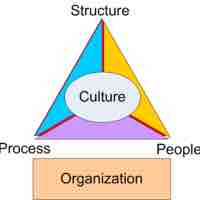Section 3
Behavioral Perspectives
Book
Version 10
By Boundless
By Boundless
Boundless Management
Management
by Boundless
5 concepts

The Behavioral-Science Approach
Behavioral science uses research and the scientific method to determine and understand behavior in the workplace.

Behaviorism: Follett, Munsterberg, and Mayo
Behaviorism initiated a focus on the psychological and human factors influencing workers.

The Human Side: Hawthorne
The Hawthorne studies found that workers were more responsive to group involvement and managerial attention than to financial incentives.
Managerial Assumption: McGregor
McGregor introduced Theories X and Y, which summarize and compare the classical management and behavioral management perspectives.

Productivity: Argyris
Argyris's theory of single- and double-loop learning has been applied to management theory to suggest the best ways for employees to learn.